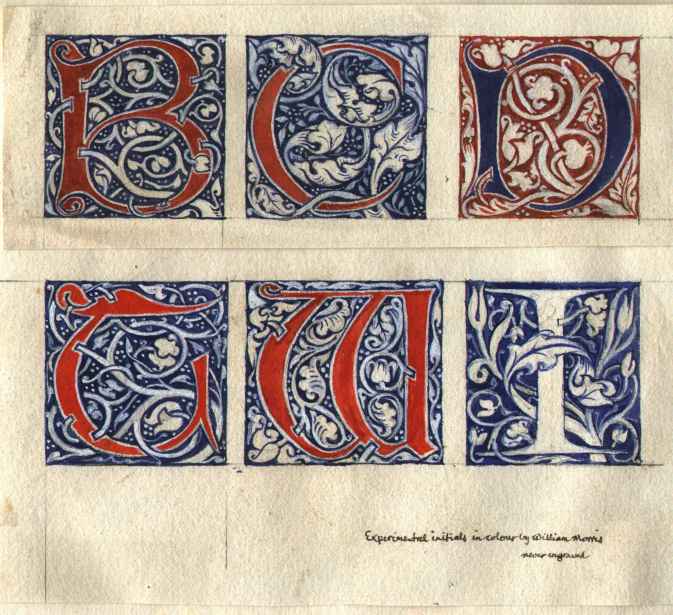Fair is the world, now autumn's wearing,This untitled poem appears in William Morris's Story of the Glittering Plain. Lawrence used the Kelmscott Press edition of London, 1904, as his source. It is the 9th entry written out in Minorities, his pocket book of blank pages.
And the sluggard sun lies long abed;
Sweet are the days, now winter's nearing,
And all winds feign that the wind is dead.
Dumb is the hedge where the crabs hang yellow,
Bright as the blossoms of the spring;
Dumb is the close where the pears grow mellow,
And none but the dauntless redbreasts sing.
Fair was the spring, but amidst his greening
Grey were the days of the hidden sun;
Fair was the summer, but overweening,
So soon his o'er-sweet days were done.
Come then, love, for peace is upon us,
Far off is failing, and far is fear,
Here where the rest in the end hath won us,
In the garnering tide of the happy year.
Come from the grey old house by the water,
Where, far from the lips of the hungry sea,
Green groweth the grass o'er the field of the slaughter,
And all is a tale for thee and me.
Lawrence recognized that Morris was no great poet and did not believe that the poem itself achieved a transcendent greatness. In 1929 he wrote his friend Charlotte Shaw that 'the charm and comfort of imperfection makes up for most of the failures of the world. We admire the very great, but love the less: perhaps that is why I would choose to live with the works of William Morris, if I had to make a single choice. My reason tells me that he isn't a very great writer: but then, he wrote just the stuff I like.' On another occasion he wrote Shaw: 'I suppose everybody loves one writer, unreasonably. I'd rather Morris than the world.' (source: letters of T.E.L. to C.F. Shaw 10 April 1929 and 23 March 1927; quoted in Catalogue of the T. E. Lawrence Centenary Exhibition held at the National Portrait Gallery, London, 1988-9. Jeremy Wilson, editor of Minorities says Morris was 'unquestionably Lawrence's favourite author.' (p. 249)
Lawrence loved the press work of Morris as well and once tentatively planned to emulate Morris by setting up a private press like Morris's Kelmscott. The impressions of The Story of the Glittering Plain turned out at this press are splendid, with typographic elements and decoration by Morris and illustrations by Walter Crane.



Some sources:
Minorities, by T E Lawrence; ed. by Jeremy Wilson (London, Cape, 1971).
Story of the Glittering Plain (1892)
Morris, William (1834–1896). Biographical note
The Story of the Glittering Plain (1891)
The Story of the Glittering Plain or The Land of Living Men by William Morris
"The story of the Glittering Plain which has been also called the Land of Living Men or the Acre of the Undying"
The Story Of The Glittering Plain, Or The Land of Living Men, introduction by Graham Seaman




No comments:
Post a Comment